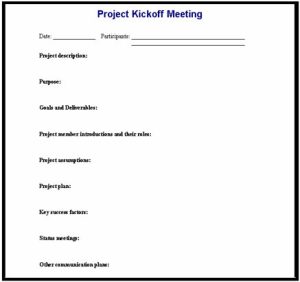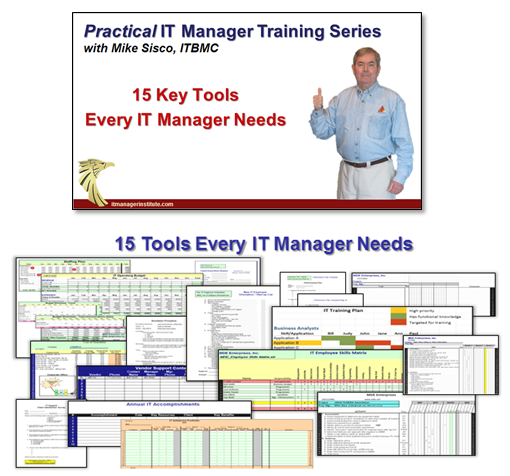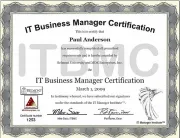 The Kickoff Meeting for a new project is your best opportunity to energize the project team and establish a common purpose toward completing the work. A great kickoff is the result of good planning.
The Kickoff Meeting for a new project is your best opportunity to energize the project team and establish a common purpose toward completing the work. A great kickoff is the result of good planning.
After you’ve done your Project Kickoff Meeting prep work (see my previous BLOG titled, Kickoff your project – Step-1 is preparation), you need to plan to actually hold an effective meeting.
I’ve developed a set of tactics that I use to set the tone for the meeting. These items help me stay organized, establish a sense of leadership, and begin moulding the individual project participants into a team. These tips will help you kickoff your next project successfully.
Agenda
As in any effective meeting, participants are better off when they have a clear understanding of how the meeting will progress. To help team members prepare, I use the following basic agenda for most of my project kickoff meetings.
- Project description

- Purpose
- Goals and Deliverables
- Project team member introductions
- Project assumptions
- Project schedule
- Key success factors
- Status meetings
- Other communication vehicles
- Questions and Answers
The meeting
Keep the meeting flowing and avoid wasting time. Be personable and be upbeat; everyone will enjoy participating more if you take this approach.
Be conscious of people’s time and hold a concise and productive meeting. The best way to do this is to be organized and prepared.
Getting started
Take immediate charge of the meeting. Welcome all participants and don’t forget to introduce yourself. Briefly explain that you’ll walk everyone through the agenda and material and that you’ll leave time for questions at the end.
Define the project, its purpose, and expected goals and deliverables. Now is a good time to reinforce the importance of delivering the project successfully. You might even mention any significant implications to the company if the project is not delivered successfully.
Introduce the project members and briefly discuss the role of each. You want to do this yourself, , , don’t let the team members introduce themselves unless it’s a small meeting. Some of your high detail members like to talk and you don’t that much detail to get the project moving.
You should do most of the talking in this first meeting. The kickoff is intended to bring everyone up to speed, not to discuss every item in detail. Every participant needs to see you taking charge of the meeting agenda.
 Presenting the project schedule
Presenting the project schedule
Now that you’ve set the tone, discuss the project assumptions that set the stage for how you developed the plan. Refer to the project plan document that you sent to everyone and go through it task by task. Explain and reinforce to everyone that this is a “first cut” and that the important thing to do in this meeting is to verify that the tasks are comprehensive, assigned appropriately, and have reasonable time frames.
The time to modify the plan is before the next meeting. Explain that the project plan becomes the foundation for status meetings and is used as the primary communication vehicle for managing the project. As you step through each task, point out key dependencies or factors you noted in preparing for the meeting that affect the completion of the task.
By walking the team through the plan, you’ll be able to point out tasks that are potential bottlenecks in completing the project. Keep your discussion to the point. Don’t get bogged down, but take the opportunity to help staff members anticipate problems.
Reinforce key success factors and explain why they are important.
Establish a timeline and team member expectations
Determine an appropriate time and day of the week to conduct weekly one-hour project status meetings. Reinforce the need for everyone to attend and to have that week’s tasks completed. Explain to them that you expect their tasks to be completed on time. If there are concerns about timelines, now is the time to scrutinize them, , , not after we commit to the schedule.
Take time to remind the group that teamwork is essential. Reinforce the need for participants to look out for one another. The objective is to complete the project successfully, and it is up to everyone to do their part and to help one another.
You might want to mention that, “Asking for help is a sign of strength, not weakness. Not asking for help is a weakness.”. High detail people tend to avoid asking for help because they think it’s viewed as weakness, , , encourage them to ask for help early if needed, , , it gives us time to do something. Requesting help too late prevents us from being able to provide the help and can jeopardize the project.
Empower team members to own their responsibilities and to ask for help. Repeat that you expect everyone to attend project status meetings prepared and with all tasks completed.
Part of your project management job is to help the team identify bottlenecks and to eliminate obstacles. Explain to them that you will be inspecting the status of tasks and you are always available if they need your assistance.
Explain the communication plan
Discuss your plan to share information and updates with the group and interested parties, including the following:
- Weekly project status meetings
- Subproject planning sessions
- Project plan status updates
- Senior management updates
- Use of the company intranet or other communication vehicles
Emphasize the need to communicate to the project manager anything they see that might affect the project.
Ask for feedback and then close
At the end of the meeting, it’s time for questions and answers. Be certain you’ve blocked out ample time. If time runs out, ask everyone to send questions to you or to call you. You can later send out a Frequently Asked Questions document or even post it on your company intranet for people interested in staying abreast of the project.
Summarize the meeting with a call for action and list outstanding items that require immediate follow-up. Provide direction on any follow-up communication needed and what you expect from everyone at the first project status meeting.
Final thoughts
If you read both articles in this 2-part BLOG post, you might have picked up on the four actions that will increase your success in leading a project:
- Establish an organized presence. Demonstrate to your team that you are on top of things.
- Empower the team members. Give each team member responsibilities and expect them to accomplish their assigned tasks by the scheduled due dates.
- Create teamwork. Encourage all to help one another and to be accountable to the project. Everyone pulling together for a common cause can have dramatic results.
- Demonstrate leadership. Organize, empower, and develop the team, and everyone will see your leadership and follow.
Take advantage of the opportunity an effective Kickoff Meeting gives you. It can make a big difference in the success of your next project.























